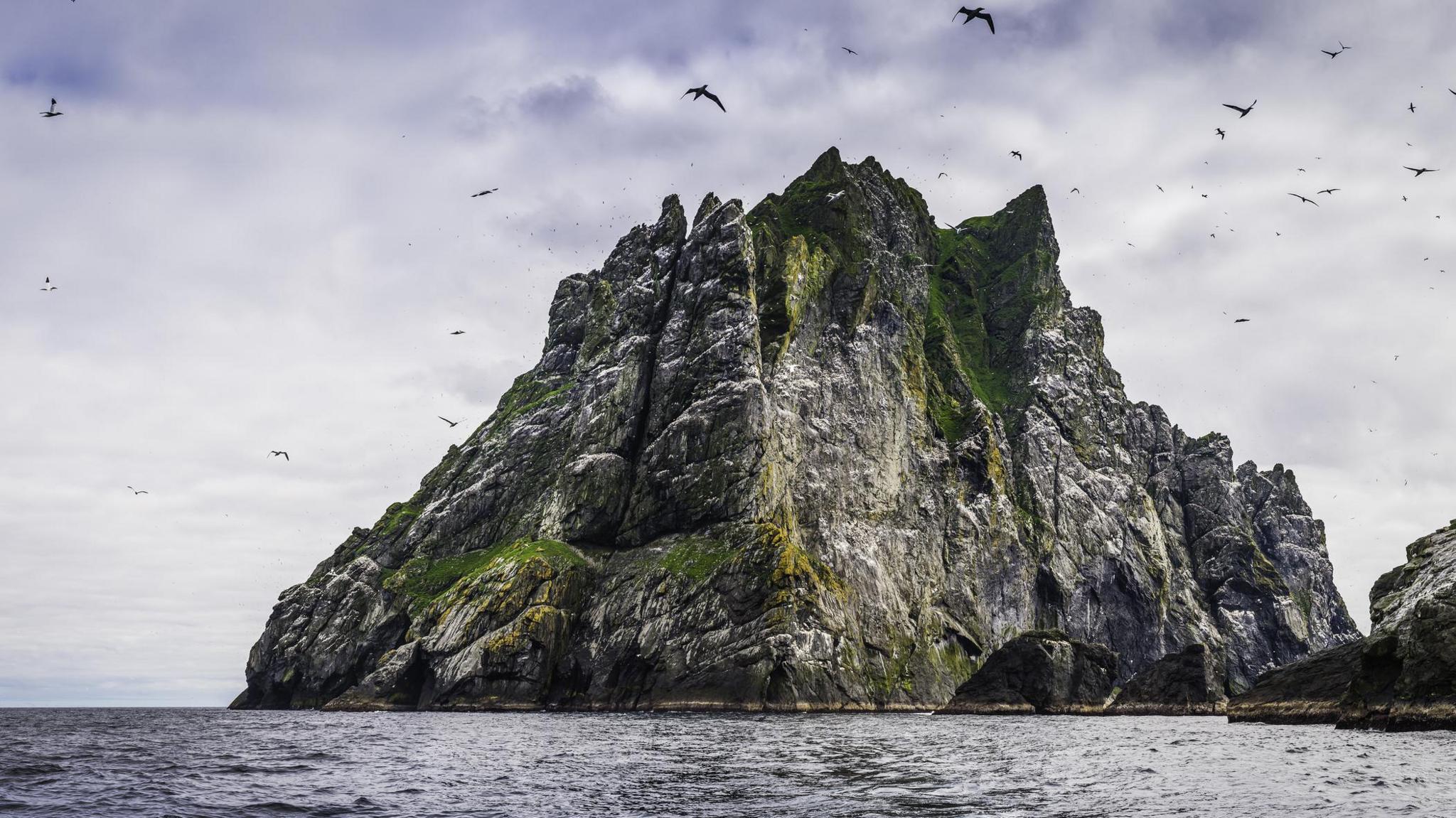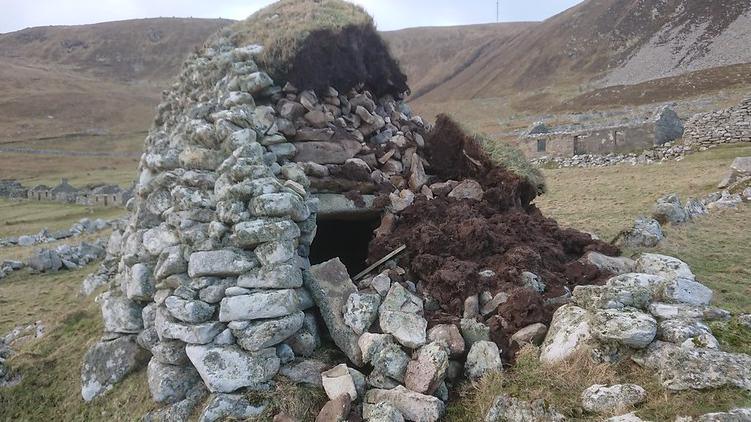Archaeologists to examine storm-hit St Kilda hut
At a glance
Archaeologists plan to investigate the construction of a stone hut, called a cleit, on St Kilda after it was damaged by storms.
The structure is believed to have been built on the site of a house where an Edinburgh-born 18th Century aristocrat was forced to live.
Lady Grange was kidnapped on the orders of her estranged husband and taken to St Kilda - 40 miles off the Western Isles.
Archaeologists believe stone from the house was used to build the cleit.
- Published
Storms have offered archaeologists potential insights into the construction of an unusual storage hut on the remote islands of St Kilda off the west coast of Scotland.
The turf-roofed stone cleit on the archipelago's island of Hirta was damaged in recent bad weather.
The hut is believed to have been built on the site of a house where Edinburgh-born 18th Century aristocrat Rachel Chiesley was forced to live after being kidnapped on the orders of her estranged husband.
National Trust for Scotland (NTS) said it was possible stones from the house were used in the building of the store.
Over the coming months, archaeologists will analyse the construction techniques and materials.
NTS Western Isles manager Susan Bain said: “This is a fascinating structure, with a really interesting history and we now have an unparalleled opportunity to discover so much more about it.
"We’ll also be able to get a really good look at the roof and take soil samples that will help us understand so much more about how the St Kildans created these unique buildings."
St Kilda, more than 40 miles (64km) from the Western Isles, was abandoned by its last islanders in 1930.
NTS manages the archipelago as a Unesco World Heritage site.
Guga hunters
Ms Chiesley became Lady Grange on marrying James Erskine, Lord Grange.
His brother, John Erskine, the Earl of Mar, led the failed Jacobite rebellion of 1715.
The earl, who owned Braemar Castle in Aberdeenshire, had voted for the 1707 Act of Union.
He had also been Secretary of State for Scotland until 1714 but rose up against the authorities.
Lord Grange was also secretly sympathetic to the Jacobite cause but feared his wife, who was angered by his infidelities, would expose him.
The lord had her kidnapped and she was first taken to North Uist before sailing to Hirta.
Erskine claimed she had died and even a funeral was held.
Lady Grange remained in exile for almost 10 years, living among the islands' fisher folk and guga hunters - men who scaled sea cliffs to catch gannets for food.
It is said she managed to get a letter to friends in Edinburgh but they were unable to rescue her.
Lady Grange spent the last years of her life on Skye.
Dr Samuel Johnson, who produced the original Dictionary Of The English Language more than 250 years ago, is said to have told St Kilda's landlord that he might make the islands profitable if he let it be known it was a place for "naughty ladies".
- Image source, Getty Images

Image caption, Recent storms have offered archaeologists an opportunity to investigate an unusual building on St Kilda.
1 of 3

